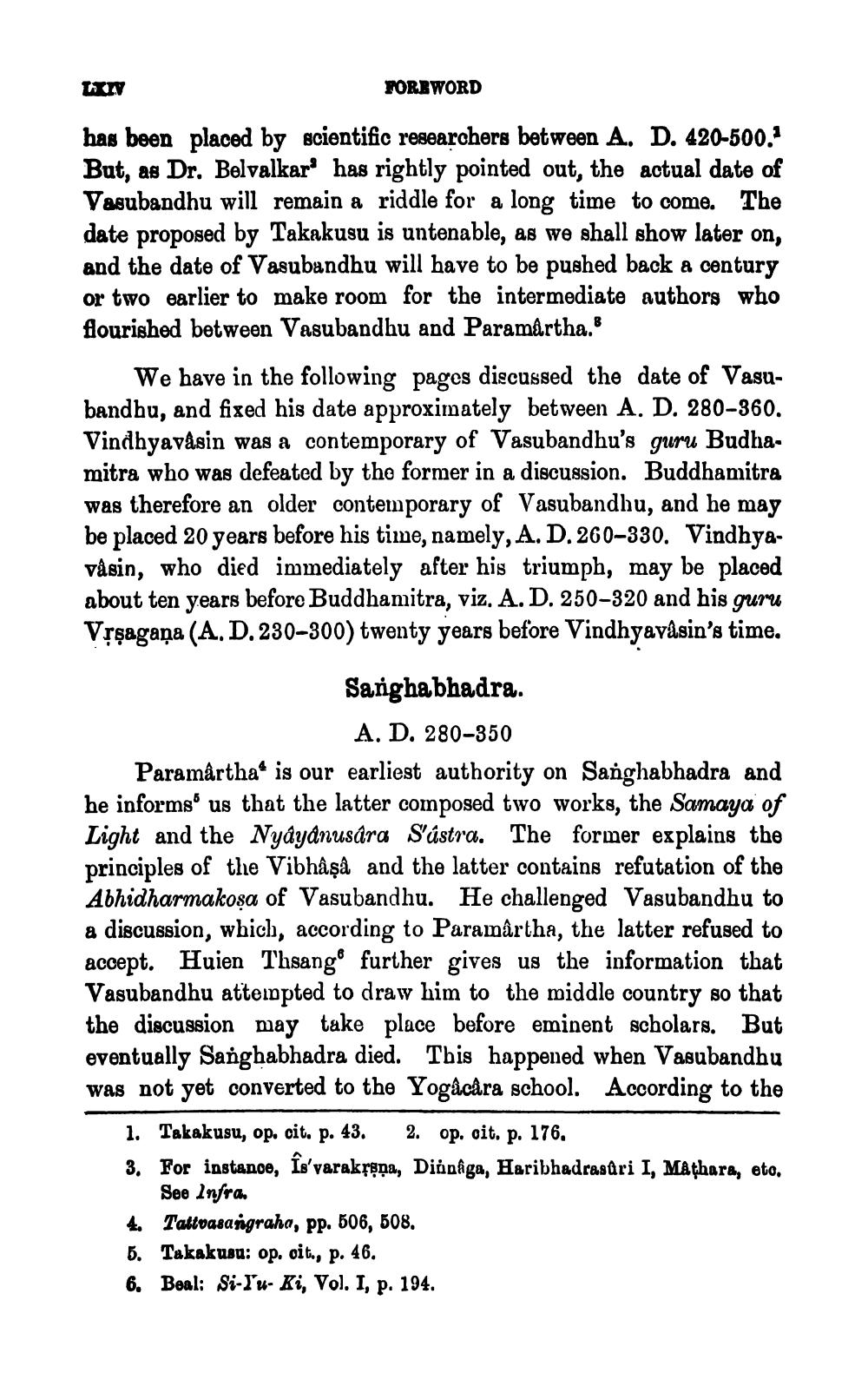________________
FOREWORD
has been placed by scientific researchers between A. D. 420-500.But, as Dr. Belvalkar has rightly pointed out, the actual date of Vasubandhu will remain a riddle for a long time to come. The date proposed by Takakusu is untenable, as we shall show later on, and the date of Vasubandhu will have to be pushed back a century or two earlier to make room for the intermediate authors who flourished between Vasubandhu and Paramartha.
We have in the following pages discussed the date of Vasubandhu, and fixed his date approximately between A. D. 280-360. Vindhyavåsin was a contemporary of Vasubandhu's guru Budha. mitra who was defeated by the former in a discussion. Buddhamitra was therefore an older contemporary of Vasubandhu, and he may be placed 20 years before his time, namely, A. D. 260-330. Vindhyavåsin, who died immediately after his triumph, may be placed about ten years before Buddhamitra, viz. A. D. 250-320 and his guru Vșşagaņa (A. D. 230-300) twenty years before Vindhyavasin's time.
Sarghabhadra.
A. D. 280-350 Paramârtha" is our earliest authority on Sanghabhadra and he informs us that the latter composed two works, the Samaya of Light and the Nyáydnusára S'ústra. The former explains the principles of the Vibhâşâ and the latter contains refutation of the Abhidharmakosa of Vasubandhu. He challenged Vasubandhu to a discussion, which, according to Paramârtha, the latter refused to accept. Huien Thsange further gives us the information that Vasubandhu attempted to draw him to the middle country so that the discussion may take place before eminent scholars. But eventually Sanghabhadra died. This happened when Vasubandhu was not yet converted to the Yogåcåra school. According to the
1. Takakusu, op. cit. p. 43. 2. op. cit. p. 176. 3. For instano rakrsna, Dianaga, Haribhadrasûri I, MAthara, eto,
See Infra 4. Tativasangraha, pp. 506, 508. 5. Takakusu: op. cit., p. 46. 6. Beal: Si-l'u- Ki, Vol. I, p. 194.




